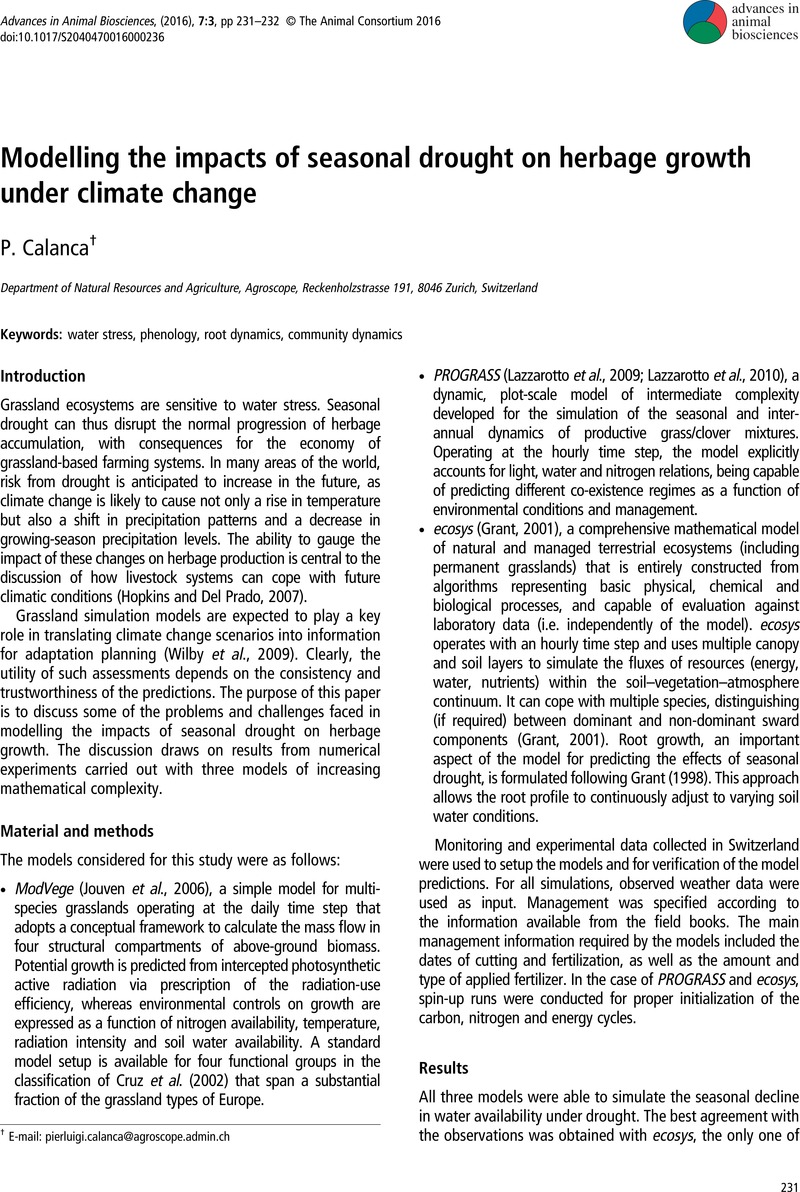Crossref Citations
This article has been cited by the following publications. This list is generated based on data provided by Crossref.
Van Oijen, Marcel
Barcza, Zoltán
Confalonieri, Roberto
Korhonen, Panu
Kröel-Dulay, György
Lellei-Kovács, Eszter
Louarn, Gaëtan
Louault, Frédérique
Martin, Raphaël
Moulin, Thibault
Movedi, Ermes
Picon-Cochard, Catherine
Rolinski, Susanne
Viovy, Nicolas
Wirth, Stephen Björn
and
Bellocchi, Gianni
2020.
Incorporating Biodiversity into Biogeochemistry Models to Improve Prediction of Ecosystem Services in Temperate Grasslands: Review and Roadmap.
Agronomy,
Vol. 10,
Issue. 2,
p.
259.



